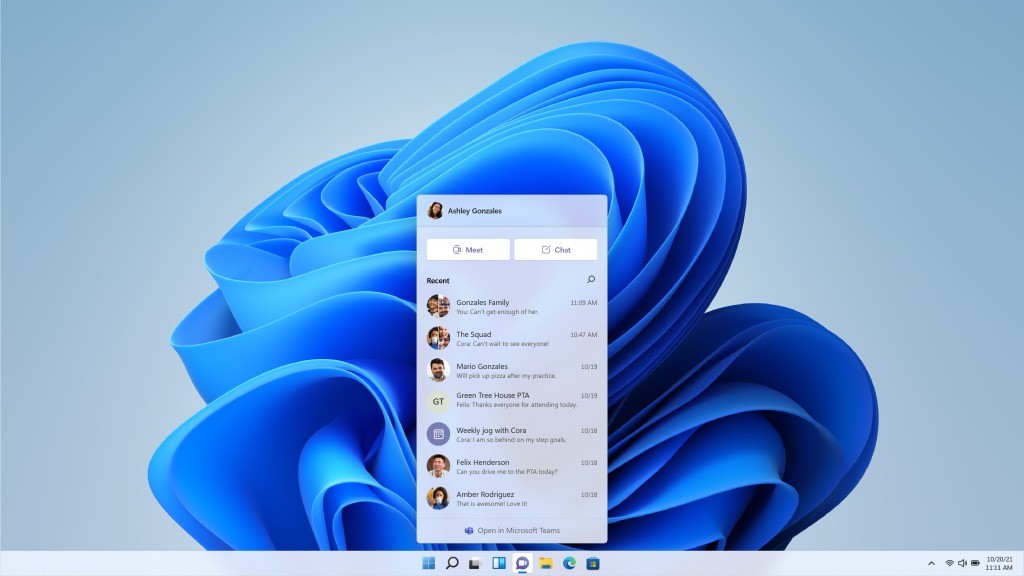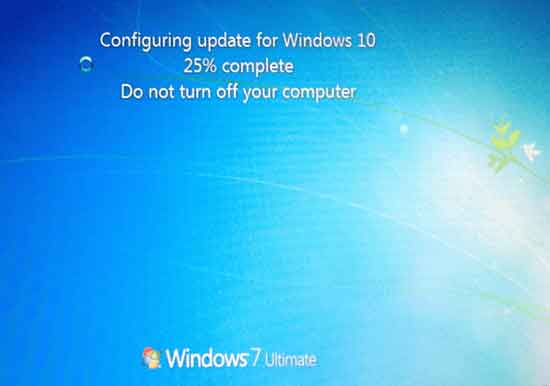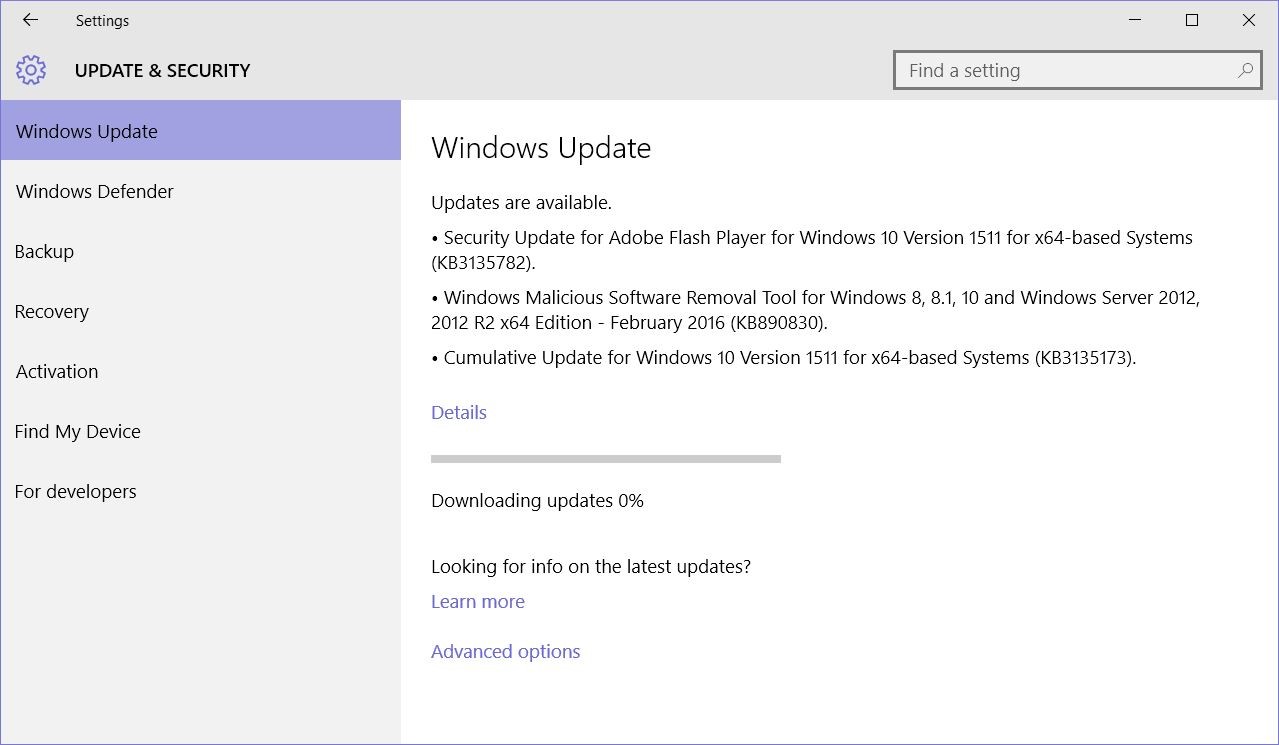If your existing Windows 10 PC is running Windows 10 20H1 or later and meets the minimum hardware specificationsit will be able to upgrade to Windows 11. The upgrade rollout plan is still being finalized, but for most devices already in use today, we expect it to be ready sometime in early 2022. Not all Windows 10 PCs that are eligible to upgrade will be offered to upgrade at the same time. To see if your PC is eligible to upgrade, refer to our knowledge base for a list of tested systems. Once the upgrade rollout has started, you can check if it is ready for your device by going to Settings/Windows Updates.
Similar to how end users are notified when updates are available in Windows 10, end users will see an indication in the notification areas of the taskbar in the bottom right, that the upgrade is available. More information on how that is presented will be available at a later date. Additional desktop notification options may be also be added at a later date. He also acknowledged the expansion of Microsoft Store to include more "traditional" desktop applications. Original equipment manufacturers can still ship computers without a TPM 2.0 coprocessor upon Microsoft's approval. Some third-party software may refuse to run on unsupported configurations of Windows 11.
As before, Microsoft doesn't recommend installing Windows 11 on a device that doesn't meet the system requirements — though you can still do so. One thing to keep in mind is you might not get updates on a PC with an unsupported processor. When Microsoft first released Windows 11 on October 4th, the company said it expected it would offer the upgrade to all eligible devices by mid-2022. We'll click on the 'download and install' button in Windows Update, and an hour or so later we'll have a different UI with a centre aligned taskbar, a few extra features...
Windows 11 update is just around the corner, with a redesigned interface and powerful new features coming to the operating system when it is released on October 5. The company's biggest upgrades to Windows since it launched the previous version back in 2015 will not be available to all users, thanks to stringent new hardware requirements. For users that do have compatible hardware, Microsoft is promising useful new features like seamless updates with Windows 11. Now, the company has explained how to make them all work after users update to the new operating system.
At least 16GB of RAM The basic system requirements of Windows 11 differ significantly from Windows 10. Windows 11 only supports 64-bit systems such as those using an x86-64 or ARM64 processor; IA-32 processors are no longer supported. Thus, Windows 11 is the first ever consumer version of Windows not to support 32-bit processors and 16-bit software . The minimum RAM and storage requirements were also increased; Windows 11 now requires at least 4GB of RAM and 64GB of storage.
S mode is only supported for the Home edition of Windows 11. The compatibility list includes the Intel Core i7-7820HQ, a seventh-generation processor used by the Surface Studio 2, although only on devices that shipped with DCH-based drivers. As part of the minimum system requirements, Windows 11 only runs on devices with a Trusted Platform Module 2.0 security coprocessor.
According to Microsoft, the TPM 2.0 coprocessor is a "critical building block" for protection against firmware and hardware attacks. In addition, Microsoft now requires devices with Windows 11 to include virtualization-based security , hypervisor-protected code integrity , and Secure Boot built-in and enabled by default. The operating system also features hardware-enforced stack protection for supported Intel and AMD processors for protection against zero-day exploits. Citing security considerations, the system requirements for Windows 11 were increased over Windows 10.
While the OS can be installed on unsupported processors, Microsoft does not guarantee the availability of updates. Windows 11 also drops support for 32-bit x86 CPUs and devices which use BIOS firmware. With its machine learning technology, Microsoft has determined further devices on which the Windows 11 update prompt should now appear automatically.
The Redmond-based software company has not revealed any additional information on which exact PC configurations are included in this third group. However, manually triggering the Windows 11 update, which is how many tech enthusiasts probably installed Windows 11 in the past weeks, is no longer necessary on these PCs. Users can simply check the regular Windows Update application in order to verify whether the Windows 11 upgrade is ready to download on their respective device.
In October 2019, Microsoft announced "Windows 10X", a future edition of Windows 10 designed exclusively for dual-touchscreen devices such as the then-upcoming Surface Neo. Legacy Windows applications would also be required to run in "containers" to ensure performance and power optimization. Microsoft stated that it planned to release Windows 10X devices by the end of 2020. Internet Explorer has been replaced by the Chromium-based Microsoft Edge as the default web browser, and Microsoft Teams is integrated into the Windows shell. Microsoft also announced plans to allow more flexibility in software that can be distributed via Microsoft Store, and to support Android apps on Windows 11 .
If you're yet to receive the new media player, you can also check the redesigned Microsoft Photos. Microsoft has officially started pushing a new image editing experience to Windows 11 21H2 Build systems. Like the Media Player, the Photos app has been redesigned and it features advanced crop or filter options. Once the installation is complete, you should find all of your files and applications in the same place you left them before the update.
Some may sport a new look (those rounded edges on apps and folders look nice, don't they?) but everything should function as you remember. You can refer to our knowledge base for a list of tested systems to determine if your device eligible to upgrade to Windows -11. Many PCs that are less than four years old will be able to upgrade to Windows 11. They must be running 20H1 or later version of Windows 10 and meet the minimum hardware requirements to receive the Windows 11 upgrade. What you need and don't need is up to you, of course, and the best thing you can do is go through your list of apps and see if you find them useful.
Open the Start menu and clickAll apps to see everything that's installed on your PC. If you see an app you don't recognize, you can open it to see if it's worth anything to you, and then keep it or uninstall it. If the app is available and updated through the Microsoft Store, it will be uninstalled right away.
If it's a "classic" app from outside of the store, you'll be taken to the Control Panel, and there you have to select the app again and click Uninstall. To put it precisely, if your PC or laptop has a 7th Gen Intel Core or AMD Zen 1 processor and meets other hardware requirements, it will run the Windows 11 preview build. The stable build of Windows 11 will, however, not support these two CPU families, according to what Microsoft has necessitated at this moment.
But Microsoft may change its stance at the time of release depending on the feedback that it will get on the Windows 11 preview build. Microsoft offers several ways to download Windows 11 manually. One is to use the Installation Assistant app, which you install on your PC to trigger a normal upgrade install via Windows Update.
The second is to use the Windows 11 Media Creation Tool, which automates the process of creating a bootable USB install drive or downloading an install ISO file. Once you have a USB drive, you can either boot from it to perform a clean install or run the Setup app from within Windows 10 to do a normal upgrade install. You can also burn the ISO to a DVD, but installing from any USB drive, even an old USB 2.0 drive, will be much faster, so you shouldn't do that. Finally, you can just download an ISO file directly from Microsoft's site. Though generally rare, it's always possible that a Windows Update will break your device or connected devices. In the past, some updates have led to problems when running certain apps.
If you notice weird issues, you'll be able to roll back your device to its previous state, so you can fix Windows 11 issues. Many games that use Anti-cheat tools also have started relying on Windows 11 security features to provide fair gameplay. While these games still work on Windows 10, it is only a matter of time before Windows 11 ends up becoming a requirement. I have yet to see any must-have features from Win11 to make me recommend a quick upgrade to win11 so it is best to wait for now to see how things pan out.
Perhaps in a few months, MS will relax its present requirements or there will be something like Storage Sense that really makes the Win 11 upgrade worthwhile. For now tho, just let the upgrade go by if you are not automatically eligible for the upgrade or are unsure about making the jump. Although Windows 11 is a free upgrade for existing devices running Windows 10, the hardware needs to meet the minimum requirements to continue with the installation process. In a nutshell, you need an Intel's 8th Gen or newer, AMD Zen 2 or newer, or Qualcomm 7 and 8 Series processor.
This is in addition to the requirements of TPM 2.0 and Secure Boot and a minimum of 64GB of storage. There is a way to install Windows 11 on unsupported hardware, but we wouldn't recommend it. Although Microsoft hasn't confirmed it, the company has heavily implied that unsupported users won't receive critical security updates.
If you still want to install, you can do so using the Media Creation Tool, which bypasses hardware checks. Devices that do not meet the minimum system requirements will remain on Windows 10 and continue to be supported with security updates. Customers using long term service releases will continue to be supported through the published end of support dates. For more information about Windows 10 support, see HP products tested with Windows 10. One of the most valuable features of Windows 10 is Timeline. It allows users to view and track 30 days of activity on their desktop or laptop from all the devices signed in to their Microsoft account.
The Windows Timeline displays all the apps accessed and organizes them in tiles arranged according to days. It is like a recent apps section for Windows 10 users, which also allows users to jump back to an app. However, Microsoft decided to remove the feature entirely in Windows 11. Another Windows 10 feature that did not make it to the final build of Windows 11 is the Tablet Mode, which helped to use the operating system on touchscreen devices. Microsoft has also provided an option to create a bootable USB drive or DVD from its Windows 11 software page.
Additionally, you can create a Windows 11 Disk Image that will be available on a bootable installation media such as a USB flash drive or DVD to help you install the new Windows version on your machine. Microsoft said the launch will be "phased and measured," with new eligible devices getting the upgrade first and the rest getting offered the free upgrade sometime between October and mid-2022. Microsoft is making sure that those who purchase a new laptop prior to Windows 11 being pre-installed by manufacturers will be able to update first. Well, part of the setup process is to download and install the most recent updates – including this one – so this should work on all computers that come with Windows 10 version 2004, 20H2, 21H1 or 21H2. Obviously, the process will need an Internet connection and a computer that matches the Windows 11 requirements (recent CPU, TPM 2.0, etc.).
(Pocket-lint) - Windows 11 is now rolling out as a free upgrade for Windows 10 users. That means you should be able to download and use Windows 11 right now - as long as your PC meets the minimum system requirements. The quickest way to get the latest version of Windows from Microsoft is to download the operating system update over the air for free, or you can go the more expensive route and buy a new Windows PC or laptop.
There are many users who, after the release of Windows 11, went ahead and checked whether their PC is eligible to be upgraded with Windows 11. Sadly, they found out that their PC does not meet the minimum requirements to install Windows 11. In this case, the question arises what options are left then? To put it simply, the best option here is to buy a new PC before the deadline, i.e. 2025. Upgrades to Windows 11 will begin to roll out late in 2021 and continue into 2022.
During this time, we will be doing some behind the scenes testing and validating for your specific PC. Windows Update will provide an indication if and when your PC is eligible. Windows 11 SE was announced on November 9, 2021, as an edition exclusively for low-end devices sold in the education market, and a successor to Windows 10 S. It is bundled with applications such as Microsoft Office for Microsoft 365, Minecraft Education Edition, and Flipgrid, while OneDrive is used to save files by default. Windows 11 SE does not include Microsoft Store; third-party software is provisioned or installed by administrators. Microsoft Teams is similarly integrated with the taskbar, with a pop-up showing a list of recent conversations.
Windows 11, the first major Windows release since 2015, builds upon its predecessor by revamping the user interface to follow Microsoft's new Fluent Design guidelines. The redesign, which focuses on ease of use and flexibility, comes alongside new productivity and social features and updates to security and accessibility, addressing some of the deficiencies of Windows 10. Click Next to have Windows 11 check for any updates, then accept the license terms. The Ready to install screen shows that Windows 11 will be installed and that your personal files and apps will be kept.
You can then elect to keep personal files and apps, personal files only, or nothing. The Windows 11 preview build brings a new Start menu, new icons, new startup sound, and other visual changes, per what Microsoft outlined at the event. There is also a new File Explorer that replaces the ribbon with a new command bar that should simplify tools for you. The Windows 11 in this preview build supports new themes, including new wallpapers and both light and dark modes. Finally, Microsoft updated the servicing stack to resolve bugs or issues preventing Windows Updates from properly installing future updates.
Unveiled in June, Windows 11 is designed as Microsoft's most advanced operating system for PCs. The new version brings a fresh user interface that includes a centrally aligned Start menu and upgraded fonts as well as notification sounds. It also integrates Microsoft Teams to let users connect with others over chat, voice, or video calls. Windows 11 also improves multitasking with Snap Layouts and Groups. It also supports multiple desktops and carries a range of accessibility features such as Narrator, Magnifier, Closed Captions, and Windows Speech Recognition.
The first thing any user who wishes to install Windows 11 preview needs to do is check the PC for compatibility. Users can either check the compatibility by reading through the minimum requirements or can simply download the Microsoft PC Health Check app. The app will run a check through the system configurations and will provide the required information.
After applying the update from the Microsoft Store, Windows Media Player will take Groove's place in the Start menu or app list. Unlike Groove, Media Player features a colour scheme of white and orange or black/dark and orange. The orange accent is called Zest and Microsoft will also allow users to switch to a system accent colour in a future release. This includes mainstream support, which comprises security updates and no-charge customer support. Whereas extended support of 5 years will include paid customer service.



























No comments:
Post a Comment
Note: Only a member of this blog may post a comment.